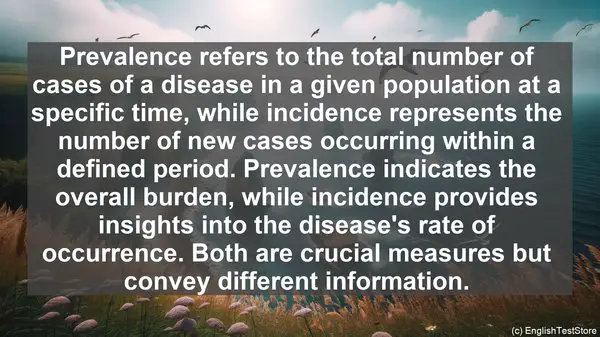Introduction
Welcome to today’s lesson. In the field of rheumatic disease studies, there are several words that often cause confusion. Understanding these words correctly is crucial for accurate interpretation and communication. So, let’s dive in and explore the top 10 commonly confused words in this domain.
1. Etiology vs. Pathogenesis
Etiology refers to the cause or origin of a disease, while pathogenesis deals with the development and progression of the disease. While etiology focuses on the ‘why,’ pathogenesis delves into the ‘how.’ So, when discussing a disease, it’s essential to differentiate between its etiology and pathogenesis.
2. Prevalence vs. Incidence
Prevalence refers to the total number of cases of a disease in a given population at a specific time, while incidence represents the number of new cases occurring within a defined period. Prevalence indicates the overall burden, while incidence provides insights into the disease’s rate of occurrence. Both are crucial measures but convey different information.

3. Sensitivity vs. Specificity
Sensitivity measures a test’s ability to correctly identify individuals with the disease, while specificity gauges its ability to correctly identify those without the disease. Sensitivity focuses on minimizing false negatives, while specificity aims to reduce false positives. Both parameters are vital for evaluating a test’s accuracy.
4. Sign vs. Symptom
A sign is an objective, observable indication of a disease, such as a rash or swelling, while a symptom is a subjective experience reported by the patient, like pain or fatigue. Signs can be measured, while symptoms are described. Understanding this distinction aids in clinical assessment and diagnosis.
5. Remission vs. Cure
Remission refers to a period when the disease’s signs and symptoms are minimal or absent, while a cure implies the complete eradication of the disease. Remission is often the goal in chronic conditions, as achieving a cure may not always be possible. Differentiating between the two is crucial for managing patient expectations.
6. Prognosis vs. Diagnosis
Prognosis refers to the predicted course and outcome of a disease, while diagnosis involves identifying the disease based on its signs, symptoms, and test results. Prognosis provides insights into the disease’s future, while diagnosis is the initial step in patient care. Both play vital roles in treatment planning.
7. Exacerbation vs. Flare-up
Exacerbation and flare-up both refer to the worsening of a disease. However, exacerbation is a broader term, often used in chronic conditions, while flare-up is commonly associated with episodic diseases, like rheumatoid arthritis. Understanding the context helps in accurate communication.
8. Morbidity vs. Mortality
Morbidity refers to the burden of disease, including its impact on the patient’s quality of life, while mortality represents the number of deaths caused by the disease. Both measures provide insights into the disease’s consequences, but from different perspectives.
9. Acute vs. Chronic
Acute refers to a disease of sudden onset and short duration, while chronic implies a long-lasting condition. The distinction is not solely based on time but also on the disease’s characteristics and management. Understanding whether a disease is acute or chronic is crucial for appropriate interventions.
10. Prophylaxis vs. Treatment
Prophylaxis involves preventive measures taken to avoid the occurrence of a disease, while treatment focuses on managing an existing disease. Prophylaxis aims to reduce the risk, while treatment aims to alleviate symptoms and improve outcomes. Both are essential components of comprehensive healthcare.

